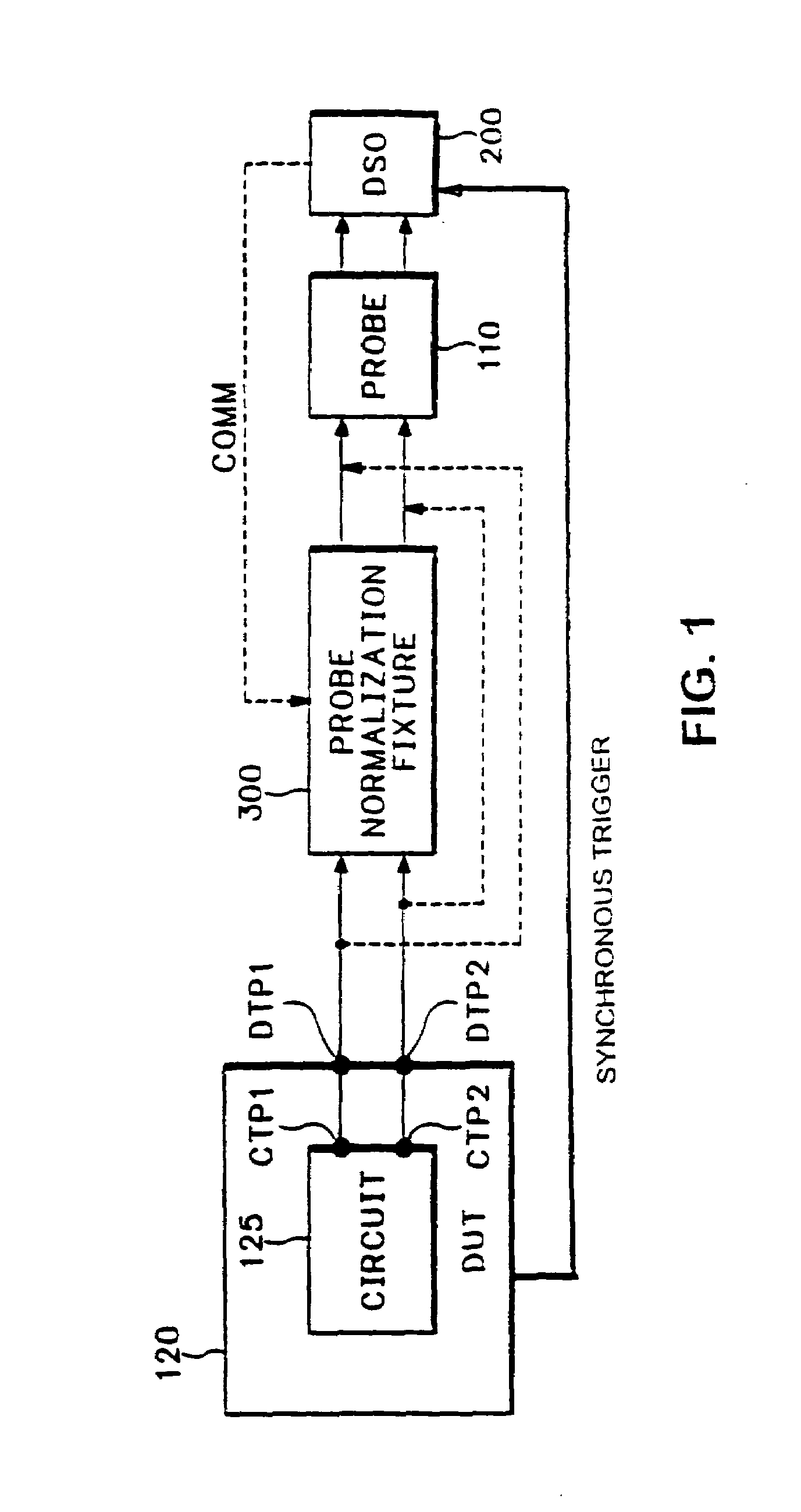De-embed method for multiple probes coupled to a device under test
a technology of multiple probes and devices, applied in liquid/fluent solid measurement, instruments, machines/engines, etc., can solve the problems of significant probe loading of circuits under test by probes, inaccurate representation of circuit voltages prior to probe loading, and inability to accurately represent circuit voltages. , to achieve the effect of reducing measurement errors
- Summary
- Abstract
- Description
- Claims
- Application Information
AI Technical Summary
Benefits of technology
Problems solved by technology
Method used
Image
Examples
Embodiment Construction
[0022]FIG. 1 depicts a high level block diagram of a testing system including a device under test arranged in accordance with an embodiment of the present invention. Specifically, a probe 110 is operably coupled to a signal analysis device such as a DSO 200 to provide thereto a signal under test (SUT) received from a device under test (DUT) 120. Interposed between the DUT 120 and the probe 110 is a probe normalization fixture 300.
[0023]In a calibrate mode of operation, the signal path between the DUT 120 and probe 110 passes through the probe normalization fixture 300. In a non-calibration mode of operation, a signal path between the DUT 120 and probe 110 is direct and excludes the probe normalization fixture 300. The calibration mode signal path is indicated by an unbroken line, while the non-calibration mode signal path is indicated by a dotted line. It will be noted that the probe paths depicted in FIG. 1 comprise two probe paths such as used within the context of a differential ...
PUM
 Login to View More
Login to View More Abstract
Description
Claims
Application Information
 Login to View More
Login to View More - R&D
- Intellectual Property
- Life Sciences
- Materials
- Tech Scout
- Unparalleled Data Quality
- Higher Quality Content
- 60% Fewer Hallucinations
Browse by: Latest US Patents, China's latest patents, Technical Efficacy Thesaurus, Application Domain, Technology Topic, Popular Technical Reports.
© 2025 PatSnap. All rights reserved.Legal|Privacy policy|Modern Slavery Act Transparency Statement|Sitemap|About US| Contact US: help@patsnap.com



